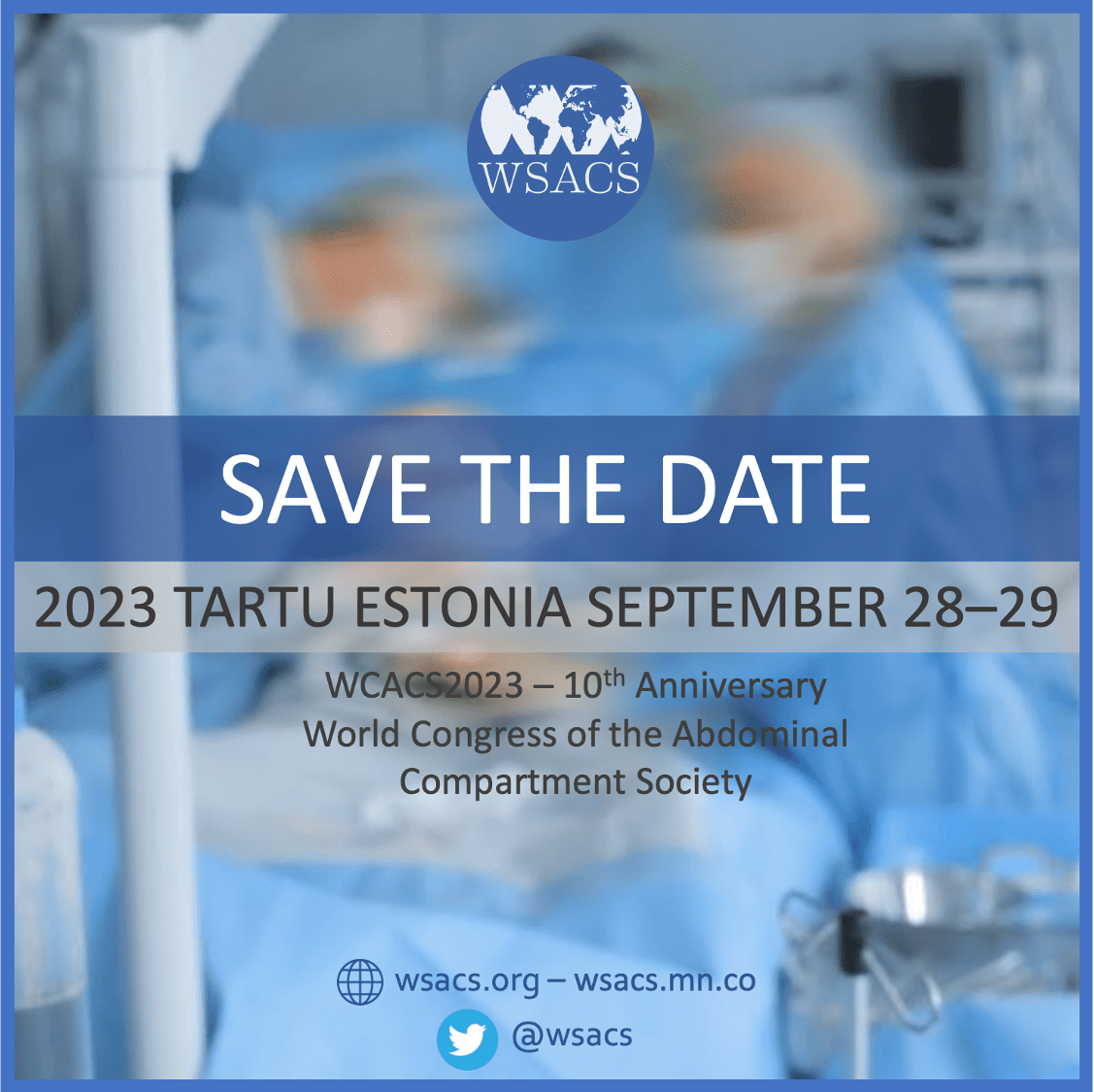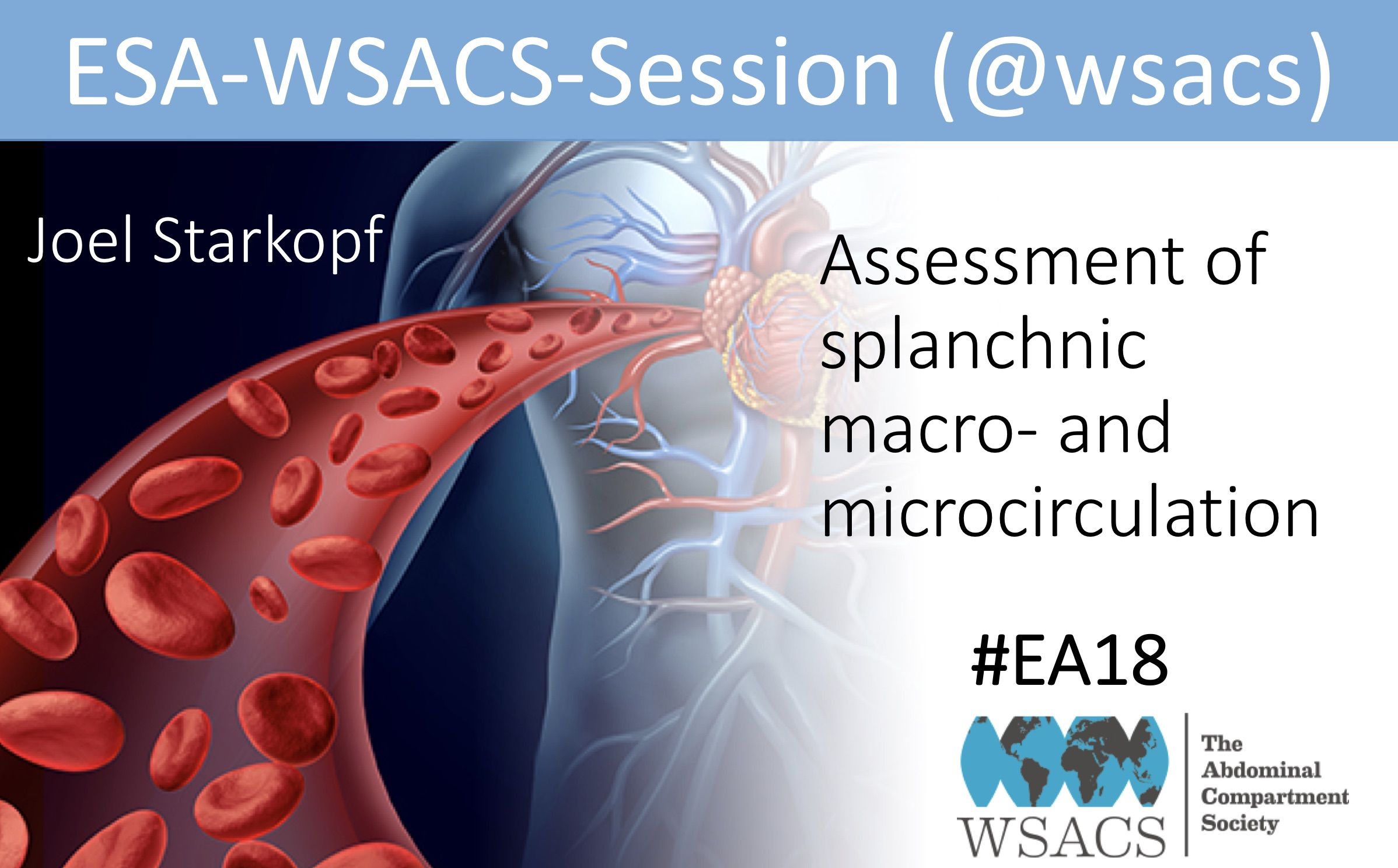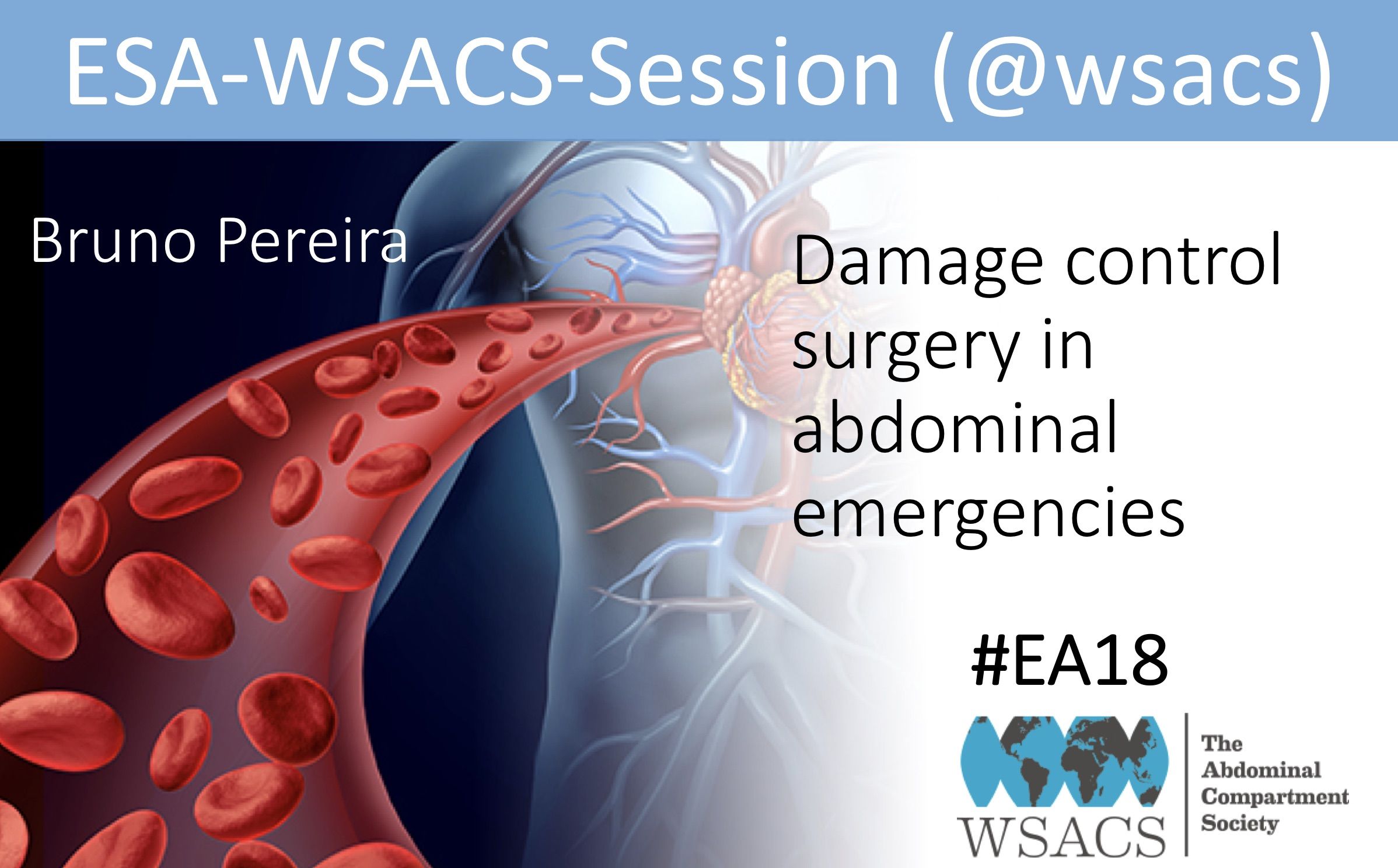In this Euroanesthesia #EA18 lecture Bruno Pereira (Campinas, Brazil) discusses the Damage control surgery
Damage control surgery
Bruno Pereira, Campinas, Brazil (drbrunompereira@gmail.com)
Despite the word “war” refer to a bad feeling it is undeniable that military conflicts have always driven innovation and technical advances in medicine and surgery. Accepted concepts of trauma resuscitation and surgery have been challenged in the recent wars, and novel approaches have been developed to address the current complexity and severity of not only military trauma but also civilian conflicts.
Damage control resuscitation (DCR) has become a topic of increasing relevance and popularity over the past several years. Hemorrhage secondary to trauma accounts for 40% of trauma fatalities and comprises the leading cause of preventable death in trauma (1). Research in military and civilian populations regarding DCR have focused on ways to improve survival in patients with severe hemorrhage. It should be mentioned that the majority of trauma patients do not require DCR and that its techniques should be reserved for those who are the most severely injured (2). For these patients the rapid and effective use of techniques to control bleeding and correction of this hemostatic derangement coined as Acute Coagulopathy of Trauma Shock (ACoTS) is essential. The perpetuating combination of acute coagulopathy, hypothermia, and acidosis seen in exsanguinating trauma patients is a well-recognized term known as Lethal Triad (figure 1). In a practical standpoint the vicious cycle of acidosis/ hypothermia/ coagulopathy must be aimed as potential lethal cycle and corrected immediately.
DCR combines two seemingly diverse strategies — permissive hypotension and hemostatic resuscitation — with damage control surgery, integrating these three procedures in one dynamic process. Therefore, DCR is designed to proceed hand in hand with damage control surgery. The sequential strategy of operation followed by resuscitation has been replaced by an integrated approach so that resuscitation and surgery are undertaken simultaneously, with close communication and cooperation between surgeon and anesthetist (2-5).
Permissive Hypotension
The recognition that fluid resuscitation might interfere with hemostatic mechanisms, ultimately exacerbating blood and coagulation factors loss, led to a re-evaluation of the former accepted concept that normal circulatory function is restored by aggressive crystalloids volume. The crystalloid fluid used in initial resuscitative efforts does not contain any clotting factors or erythrocytes. Its use may result in a dilution of clotting factors or role blood, and therefore poorer control of bleeding and impaired oxygen transport to tissues causing further ischemic damage. Additionally, crystalloids have an acidic pH, and the administration of large quantities of isotonic or slightly hypertonic crystalloid solutions such as 0.9% normal saline or Lactated Ringer’s could cause or aggravate metabolic acidosis, another component of the “Lethal Triad” leading to a decrease in myocardial function and cell apoptosis (6-9).
Permissive hypotension, also known as hypotensive resuscitation, is a strategy of restricting crystalloids administration until the bleeding is controlled, while accepting a limited period of suboptimum end-organ perfusion.
Following injury the otherwise healthy individual has a natural ability to clot off bleeding. The higher the vessels pressure, the harder it is for the bleeding to stop, since the fluid essentially “pushes” the clot out and consequently the bleeding resumes. In another words, it is reasonable to think that hypotension facilitates coagulation. Attempts to normalize blood pressure in case of uncontrolled bleeding as in victims of penetrating trauma, may result in increased blood loss and worsen outcomes(10). Another issue with aggressive fluid resuscitation is the potential for hypothermia if fluids that are stored at room temperature are used. If these fluids are not warmed prior to infusion, this can result in a significant drop in core body temperature. As exposed in figure 1, hypothermia is associated with many problems including bleeding disorder, organ failure, hypotension, and is one of the three components in the “Lethal Triad”, condition that must be feared and soon corrected by all trauma specialists (5-8).
It is important to remember that permissive hypotension is a temporizing measure to improve outcomes until the source of bleeding is controlled. There are consequences associated with prolonged permissive hypotension (> 90 min) that must be taken to account. Prolonged permissive hypotension can lead to aggravated post-injury coagulopathy, ischemic damage secondary to poor tissue perfusion including the brain, mitochondrial dysfunction, and lactic acidosis among others. Permissive hypotension is currently contra-indicated in the presence of traumatic brain injury suspicion.
No published evidence exists to support the strategy of permissive or controlled hypotension, although its usefulness has not been entirely ruled out either. Few would argue against replacing lost intravascular volume in patients with controlled or self-limiting hemorrhage. In patients with uncontrolled hemorrhage, particularly in the context of penetrating torso trauma, a strategy of permissive hypotension, together with expert resuscitation and rapid control of hemorrhage, might be more appropriate. It is conceivable that permissive hypotension is more applicable to the management of penetrating trauma, which is often characterized by the presence of major vascular injuries, than to blunt injuries.
Despite the lack of evidence, guideline recommendations for clinical practice point towards judicious administration of intravenous fluids. In recognition of the unique challenges posed by combat casualties, permissive hypotension has been incorporated into military medical doctrine and used widely during the recent war conflicts (4).
Hemostatic resuscitation
Hemostatic resuscitation has also recently become a popular form of transfusion therapy. The concept of giving fractionated blood in an attempt to closely approximate whole blood makes a lot of sense. In this context, hemostatic resuscitation provides transfusions with plasma and platelets in addition to red blood cells in an immediate and sustained manner as part of the transfusion protocol for massively bleeding patients. Rapid and proactive treatment of the coagulopathy associated with major injury is now recognized as central to improve outcome. Although early and effective reversal of coagulopathy is documented, the most effective means of preventing coagulopathy of massive transfusion remains debated and randomized controlled studies are lacking (11-14).
With all this said, became clear that the high prevalence and profound impact of coagulopathy mandates timely treatment of trauma patients. Strategies to proactive action in the emergency room and operating room may include: administration of packed red blood cells, fresh frozen plasma and platelets; use of recombinant factor VIIa, cryoprecipitate and tranexamic acid; and calcium replacement.
Commonly available diagnostic tests—such as prothrombin time and activated partial thromboplastin time—are inappropriate for guiding treatment in trauma patients owing to their poor sensitivity and the delay in obtaining results, so the decision to initiate clotting factor replacement is a clinical one.
Massive Transfusion Protocol
Massive bleeding patients demand a Massive Transfusion Protocol (MTP). The traditional definition of massive transfusion is 20 units Red Blood Cells (RBCs) in 24 hours, which corresponds to approximately 1 blood volume in a 70 kg patient. A commonly used definition in the trauma literature is > 10 units RBCs in 24 hours. Both of these definitions are reasonable for publications, but are not practical in an ongoing resuscitation. Other definitions are: loss of 0.5 blood volume within 3 hours; use of 50 units of blood components in 24 hours; use of 6 units RBCs in 12 hours. From a practical standpoint, requirement for > 4 RBC units in 1 hour with ongoing need for transfusion, or blood loss > 150 ml/min with hemodynamic instability and need for transfusion are reasonable definitions in the setting of a MTP situation.
Once MTP is initiated, the target is to achieve a close ratio resuscitation with 1:1:1 of Fresh Frozen Plasma (FFP), Platelets (Plts), and Packed Red Blood Cells (PRBC). The rationale behind early and sustained administration of FFP involves the replacement of fibrinogen and clotting factors (15). In mathematical studies, Hirshberg et al noted that resuscitation with more than five units of PRBCs will lead to a dilutional coagulopathy, and that the ideal manner to correct for this coagulopathy would be to add FFP to PRBC in a 2:3 FFP:PRBC ratio (16). Another study by Ho et al noted that once excessive deficiency of factors has developed, 1 to 1.5 units of FFP must be given for every unit of PRBCs transfused (17).
It should be emphasized FFP replacement alone does not address the coagulopathy seen in trauma patients with severe hemorrhage. A quantitative and qualitative platelet dysfunction has been shown to play a role as well in the mechanism of coagulation (18). Although not as extensively as FFP, platelet replacement as a part of transfusion protocols has been studied to determine the most effective ratio of platelets to PRBC. Hirshberg et al suggests a ratio of platelet: PRBC of 8:10 is effective in preventing dilution of platelets below the hemostatic threshold (16). It should be noted however, that both studies were theoretical models and did not take into the account factors such as hypothermia, acidosis, thrombocytopenia or ACoTS. These mathematical models for FFP and Platelets set forth by Hirschberg and Ho have helped modify ratios used for MTPs throughout the world (13, 19).
Approximately 3-5% of civilian adult trauma patients receive massive transfusion. Early identification of patients requiring MTP has been evaluated by assigning a value of 0 or 1 to the following four parameters: penetrating mechanism, positive FAST for fluid (focused assessment sonography in trauma), arrival blood pressure <90 mm Hg, and arrival pulse >120 bpm. A score of 2 or more is considered positive (20-23). The score is 75% sensitive and 85% specific. FAST examination identifies whether there is free fluid within the peritoneum, which could indicate organ rupture and internal bleeding. Patients receiving uncross-matched red cells in the emergency department are three times more likely to receive massive transfusion.
Recombinant Factor VIIa
Recombinant Factor VIIa use in trauma emerged because of the additional necessity of correcting ACoTS. Researches suggested that a pharmacological adjunct would be useful to treatment of ACoTS and this could play an important outcome role.
Recombinant activated factor VII (rFVIIa) is a hemostatic agent originally developed to treat hemophilia, FVII deficiency, and Glanzmann thrombasthenia patients refractory to platelet transfusion. The activation of platelets at the site of injury is the reason for a localized action of rFVIIa, as it causes clotting at the site of bleeding. The dose ranges from 60–200 g/kg, however, prospective randomized controlled clinical trials using different doses of rFVIIa are needed to explore the potential efficacy of lower doses in traumatic coagulopathy to reduce cost and adverse effects, such as thromboembolic complications (24). The efficacy and safety of rFVIIa as an adjunct therapy for bleeding control in patients with severe blunt and penetrating trauma were evaluated in a parallel randomized, placebo-controlled, double blind clinical trial (25). The authors compared three doses of rFVIIa (doses of 200, 100, and 100 µg/kg) with three doses of placebo in addition to standard treatment in patients who received 6 units of RBCs within a 4-h period. In blunt trauma (143 patients), RBCs transfusion was significantly reduced with rFVIIa compared to placebo, and the need for massive transfusion (defined as 20 units of RBCs) was reduced (14% vs. 33%, respectively). In penetrating trauma (134 patients), there was no reduction in mortality and complications or reduction of PRBCs transfusedin patients receiving rFVIIa. Adverse effects, including thromboembolic events (a total of 12, six in each group),were distributed equally between the groups. The authors concluded that rFVIIa is safe within the investigated dose and may be a promising adjunct to existing therapy in trauma (25). The effects of liberally administering rFVIIa in hemorrhaging trauma patients are unknown because its pro-coagulant effect must be balanced against a real risk of thromboembolic events. At present, the use of rFVIIa in correcting coagulopathy from trauma is off-label and has not been approved by the Food and Drug Administration (26).
Fibrinogen and Cryoprecipitate
Fibrinogen deficiency develops earlier than deficiency of other clotting factors Fibrinogen is, therefore, an obvious target for replacement with either cryoprecipitate—which contains fibrinogen, factor VIII, factor XIII, and von Willebrand factor—or fibrinogen concentrate. Updated guidelines recommend giving either product if plasma fibrinogen levels fall below 1.0 g/l. Concerns about patient exposure to a large number of donors and the associated risk of blood borne virus transmission limit the use of cryoprecipitate to situations where conventional treatment has failed (5, 27).
Tranexamic Acid
Clot breakdown (fibrinolysis) is a normal response to surgery and trauma in order to maintain vascular patency and can become exaggerated (hyperfibrinolysis) in some cases. The antifibrinolytic drug tranexamic acid (TXA), a lysine analogue, interferes with the binding of plasminogen to fibrin, which is necessary for plasmin activation. Fibrinolysis consists of activated plamin cleaving fibrin. Antifribrinolytic drugs can prevent clot breakdown and thus reduce blood loss in trauma (28-29). TXA has recently been shown to reduce deaths in a large population of trauma patients. In 2011, the CRASH-2 investigators published an exploratory analysis of the previous trial that specifically evaluated the effect of tranexamic acid on death due to bleeding subdivided by time from treatment to injury. The results showed that earlier treatment with tranexamic acid is more effective in reducing the risk of death due to bleeding. Patients that received tranexamic acid within 1 hour of injury had a death rate due to bleeding of 5.3% versus 7.7% for placebo (RR 0.79, CI 0.64-0.97; p<0.0001). Similarly, patients that received treatment between 1-3 hours from injury also had a significantly lower risk of death due to bleeding. However, patients receiving tranexamic acid >3 hours from injury had a significantly increased risk of death compared to placebo, 4.4% vs 3.1%, respectively (RR 1.44, CI 1.12-1.84; p=0.004) (28).
Current recommendations for the use of TXA are the following (29):
- Tranexamic acid should be routinely used in trauma patients with evidence of bleeding;
- Tranexamic acid should be included in transfusion protocols for trauma;
- Tranexamic acid should be given within 3 hours of injury;
- Administer 1g of TXA intravenously (bolus over 10 minutes) followed by the infusion of 1g over 8 hours.
Calcium administration
Ionised hypocalcaemia is common in critically ill patients and is associated with increased mortality. Calcium is an important cofactor to many components of the coagulation cascade. Citrate, used as an anticoagulant in many blood components, chelates calcium and exacerbates hypocalcaemia. The dose-response effect of hypocalcaemia on coagulation is difficult to measure. A recent non-systematic review, however, extrapolated that ionised calcium concentrations of less than 0.6-0.7 mmol/l could lead to coagulation defects and recommended maintaining a concentration of at least 0.9 mmol/l (5, 14).
Aged Packed Red Cells
The transfusion of red cells with a high storage age has been associated with increased rates of infective complications and multiple organ failure. Although the shelf life of packed red cell units is around six weeks, adverse effects of administration—which are thought to be mediated by passenger leukocytes— have been shown with units at a storage age of about two weeks. When blood is stored, the level of antioxidants decreases, resulting in oxidative damage that converts hemoglobin to methemoglobin, which cannot bind to oxygen. If blood is stored for more than 7 days, it loses 2,3-DPG. Without 2,3-DPG, the hemoglobin-oxygen dissociation curve shifts to the left and less oxygen moves into the tissues. Storage also promotes hemolysis and acidosis. Researchers have found that transfused blood is an independent predictor of multisystem organ failure and death (14, 19).
A recent large retrospective cohort study of trauma patients showed that transfusion of red cells stored for longer than two weeks was associated with significantly increased odds of death. This finding was observed despite leukoreduction, but was apparent only among patients who received at least six units of packed cells. Recently donated red cells are, therefore, preferable for trauma patients requiring massive transfusion, although such a practice has obvious logistical and resource implications (30).
Damage Control Surgery
The concept of damage control surgery arose from the realization that the massively traumatized patient lacked the physiological reserve to survive the rigors of complex and prolonged definitive or reconstructive surgery. It is now an accepted part of the trauma surgeon’s armamentarium and viewed as a component of damage control resuscitation. The aim of damage control surgery is to stop hemorrhage and minimize contamination. Temporary clamping, packing, shunting, or ligation controls hemorrhage, and hollow viscus injuries are either closed or resected without anastomosis. On completion of the procedure, the abdomen is temporarily closed using an improvised or commercially avail- able topical negative pressure dressing, which saves time, helps to minimize the risk of intra-abdominal hypertension, and facilitates observation of the volume and nature of drainage from the abdomen. Planned re-operation to restore anatomy and achieve definitive repair is carried out on return to normal physiology. Damage control surgery is associated with potential morbidity, should be employed judiciously and not be practiced in isolation (2, 6, 31).
Evidence-Based Current Recommendations
Level I Recommendations:
- An FFP to PRBC ratio of 1:1 is associated with less transfusions. Sufficient evidence does exist for showing that transfusion with FFP will decrease the number of transfusions needed. It should be noted that there are no randomized, prospective, class I trials. Conducting such trials in the future will be essential to continuing to understand the ideal manner to transfuse during trauma.
- Class I evidence supports use of antifibrinolytics in massive transfusion. The recently completed CRASH-2 trials demonstrate improved all-cause mortality as well as mortality due to hemorrhage. Further Class I, II and III studies should be performed to further support these findings.
Level II Recommendations:
- A MTP will improve outcomes for trauma resuscitations. There are many logistical challenges associated with this strategy. Many civilian institutions, even level I trauma centers, have yet to adopt a MTP. However, simple ratios such as 1:1 FFP:PRBC have the benefit of ease of use and the relatively higher plasma doses appear to be associated with improved outcome. Such a standard protocol can foster multi-center research on resuscitation and hemorrhage control.
- High FFP:PRBC is supported by Class II and Class III evidence and should be considered in the treatment of massively transfused coagulopathic trauma patients. Class II and Class III data demonstrates the potential for severe complications such as ARDS/Acute Lung Injury, increased hospital and ICU LOS, and increased ventilator time, however, most studies demonstrate improved mortality suggesting an overall improvement in the use of these therapies.
Level III Recommendations:
- Increased FFP to PRBC ratio leads to improved outcomes in massive transfusion with the potential for severe complication. MTP implementation and adherence yields improved results with decreases in mortality and complication rates.
- The use of high ratio Platelets : PRBC is supported by some class II studies and several Class III studies. Increased Platelets : PRBC has become an integral part of DCR in recent years.
- Several Class III studies demonstrate mortality improvement with the use of fibrinogen concentrate. The use of fibrinogen in the trauma induced coagulopathy and DCR should be studied further in Class I and Class II trials.
- Increased FFP to PRBC ratio administered early leads to improved outcomes in massive hemorrhage. This benefit is believed to be extended to patients undergoing transfusion with increased FFP:PRBC ratios due to lower transfusion requirements, less risk of complications secondary to the transfusions, and better ability to compensate for the coagulopathy of trauma. Although there is not yet a consensus regarding mortality reduction from increased FFP:PRBC ratios, there does appear to be a trend towards decreased mortality. Likely optimized protocol guidelines will contribute to standardizing variations amongst current practices.
Critical Decision and Decision Making
Decision making is a process by which one or more actions are chosen from among several possible in a given scenario. This choice is based on a set of factors and information that drives the intellect to process the probabilities of a beneficial or positive outcome or the one with the highest expectation of success. In clinical practice, excluding the scenario of trauma or emergency care – the decision making process is the mechanics bet by the physician with the objective of solving a problem based on his theoretical and practical knowledge. In this way, it becomes evident that the theoretical exposition with updated reading and scientific foundation is an important pillar in the correct decision making, however it is obviously not the only one and it is associated with the compound theory-practice. In the current process of apprenticeship employed in most medical universities in the world, propaedeutic is the form in which logical reasoning leads to a diagnostic conclusion. The propaedeutic consists in the preparation of the medical student to practice science in a coherent methodological way, basing himself on basic strategies with the purpose or purpose of gathering and obtaining information about the patient and the current illness. These strategies widely applied in current medical teaching are brought together in the conceptual tripod anamnesis, physical examination and complementary examinations. The latter being increasingly employed in order to reduce the degree of uncertainty regarding the definitive diagnosis and the proposition of the treatment in question. However, in an emergency and trauma scenario, the aforementioned classic propaedeutic can not be performed in the vast majority of cases, thus theoretically decreasing the chances of a coherent conclusive diagnosis and increasing the insecurity of the physician in training when exposed to these scenarios under this rational. Thus, in these scenarios, communication between teams is essential in order to avoid wrong decision making and optimize the level of care.
References
- Sauaia A, Moore FA, Moore EE, Moser KS, Brennan R, Read RA, et al. Epidemiology of trauma deaths: a reassessment. J Trauma. 1995 Feb;38(2):185-93.
- Duchesne JC, McSwain NE, Jr., Cotton BA, Hunt JP, Dellavolpe J, Lafaro K, et al. Damage control resuscitation: the new face of damage control. J Trauma. 2010 Oct;69(4):976-90.
- Duchesne JC, Holcomb JB. Damage control resuscitation: addressing trauma-induced coagulopathy. Br J Hosp Med (Lond). 2009 Jan;70(1):22-5.
- Tarmey NT, Woolley T, Jansen JO, Doran CM, Easby D, Wood PR, et al. Evolution of coagulopathy monitoring in military damage-control resuscitation. J Trauma. 2012 Dec;73 (6 Suppl 5):S417-22.
- Jansen JO, Thomas R, Loudon MA, Brooks A. Damage control resuscitation for patients with major trauma. BMJ. 2009;338:b1778.
- Duchesne JC, Barbeau JM, Islam TM, Wahl G, Greiffenstein P, McSwain NE, Jr. Damage control resuscitation: from emergency department to the operating room. The Am Surg. 2011 Feb;77(2):201-6.
- Duchesne JC, Guidry C, Hoffman JR, Park TS, Bock J, Lawson S, et al. Low-volume resuscitation for severe intraoperative hemorrhage: a step in the right direction. Am Surg. 2012 Sep;78(9):936-41.
- Duke MD, Guidry C, Guice J, Stuke L, Marr AB, Hunt JP, et al. Restrictive fluid resuscitation in combination with damage control resuscitation: time for adaptation. J Trauma. 2012 Sep;73(3):674-8.
- Spoerke N, Michalek J, Schreiber M, Brasel KJ, Vercruysse G, MacLeod J, et al. Crystalloid resuscitation improves survival in trauma patients receiving low ratios of fresh frozen plasma to packed red blood cells. J Trauma. 2011 Aug;71(2 Suppl 3):S380-3.
- Mitra B, Cameron PA, Mori A, Fitzgerald M. Acute coagulopathy and early deaths post major trauma. Injury. 2012 Jan;43(1):22-5.
- Duchesne JC, Hunt JP, Wahl G, Marr AB, Wang YZ, Weintraub SE, et al. Review of current blood transfusions strategies in a mature level I trauma center: were we wrong for the last 60 years? J Trauma. 2008 Aug;65(2):272-6; discussion 6-8.
- Duchesne JC, Islam TM, Stuke L, Timmer JR, Barbeau JM, Marr AB, et al. Hemostatic resuscitation during surgery improves survival in patients with traumatic-induced coagulopathy. J Trauma. 2009 Jul;67(1):33-7; discussion 7-9.
- Gunter OL, Jr., Au BK, Isbell JM, Mowery NT, Young PP, Cotton BA. Optimizing outcomes in damage control resuscitation: identifying blood product ratios associated with improved survival. J Trauma. 2008 Sep;65(3):527-34.
- Holcomb JB, Wade CE, Brasel KJ, Vercruysse G, MacLeod J, Dutton RP, et al. Defining present blood component transfusion practices in trauma patients: papers from the Trauma Outcomes Group. J Trauma. 2011 Aug;71(2 Suppl 3):S315-7.
- Ketchum L, Hess JR, Hiippala S. Indications for early fresh frozen plasma, cryoprecipitate, and platelet transfusion in trauma. J Trauma. 2006 Jun;60(6 Suppl):S51-8.
- Hirshberg A, Dugas M, Banez EI, Scott BG, Wall MJ, Jr., Mattox KL. Minimizing dilutional coagulopathy in exsanguinating hemorrhage: a computer simulation. J Trauma. 2003 Mar;54(3):454-63.
- Ho AM, Dion PW, Cheng CA, Karmakar MK, Cheng G, Peng Z, et al. A mathematical model for fresh frozen plasma transfusion strategies during major trauma resuscitation with ongoing hemorrhage. Can J Surg. 2005 Dec;48(6):470-8.
- Hess JR, Brohi K, Dutton RP, Hauser CJ, Holcomb JB, Kluger Y, et al. The coagulopathy of trauma: a review of mechanisms. J Trauma. 2008 Oct;65(4):748-54.
- Malone DL, Hess JR, Fingerhut A. Massive transfusion practices around the globe and a suggestion for a common massive transfusion protocol. J Trauma. 2006 Jun;60(6 Suppl):S91-6.
- Cotton BA, Dossett LA, Haut ER, Shafi S, Nunez TC, Au BK, et al. Multicenter validation of a simplified score to predict massive transfusion in trauma. J Trauma. 2010 Jul;69 Suppl 1:S33-9.
- Holcomb JB, Zarzabal LA, Michalek JE, Kozar RA, Spinella PC, Perkins JG, et al. Increased platelet:RBC ratios are associated with improved survival after massive transfusion. J Trauma. 2011 Aug;71(2 Suppl 3):S318-28.
- Nunez TC, Young PP, Holcomb JB, Cotton BA. Creation, implementation, and maturation of a massive transfusion protocol for the exsanguinating trauma patient. J Trauma. 2010 Jun;68(6):1498-505.
- Wade CE, del Junco DJ, Holcomb JB, Holcomb JB, Wade CE, Brasel KJ, et al. Variations between level I trauma centers in 24-hour mortality in severely injured patients requiring a massive transfusion. J Trauma. 2011 Aug;71(2 Suppl 3):S389-93.
- Duchesne JC, Mathew KA, Marr AB, Pinsky MR, Barbeau JM, McSwain NE. Current evidence based guidelines for factor VIIa use in trauma: the good, the bad, and the ugly. Am Surg. 2008 Dec;74(12):1159-65.
- Mitra B, Mori A, Cameron PA, Fitzgerald M, Paul E, Street A. Fresh frozen plasma (FFP) use during massive blood transfusion in trauma resuscitation. Injury. 2010 Jan;41(1):35-9.
- Fraga GP, Bansal V, Coimbra R. Transfusion of blood products in trauma: an update. J Emerg Med. 2010 Aug;39(2):253-60.
- Duchesne JC. Lyophilized fibrinogen for hemorrhage after trauma. J Trauma. 2011 May;70(5 Suppl):S50-2.
- Roberts I, Shakur H, Afolabi A, Brohi K, Coats T, Dewan Y, et al. The importance of early treatment with tranexamic acid in bleeding trauma patients: an exploratory analysis of the CRASH-2 randomised controlled trial. Lancet. 2011 Mar 26;377(9771):1096-101, 101 e1-2.
- Luz L, Sankarankutty A, Passos E, Rizoli S, Fraga GP, Nascimento B, Jr. Tranexamic acid for traumatic hemorrhage. Revista do Colegio Brasileiro de Cirurgioes. 2012;39(1):77-80.
- Boffard KD, Choong PI, Kluger Y, Riou B, Rizoli SB, Rossaint R, et al. The treatment of bleeding is to stop the bleeding! Treatment of trauma-related hemorrhage. Transfusion. 2009 Dec;49 Suppl 5:240S-7S.
- Duchesne JC, Kimonis K, Marr AB, Rennie KV, Wahl G, Wells JE, et al. Damage control resuscitation in combination with damage control laparotomy: a survival advantage. J Trauma. 2010 Jul;69(1):46-52.
 Position statement from the WSACS Board members on equity, diversity and inclusion (EDI)
Position statement from the WSACS Board members on equity, diversity and inclusion (EDI)















